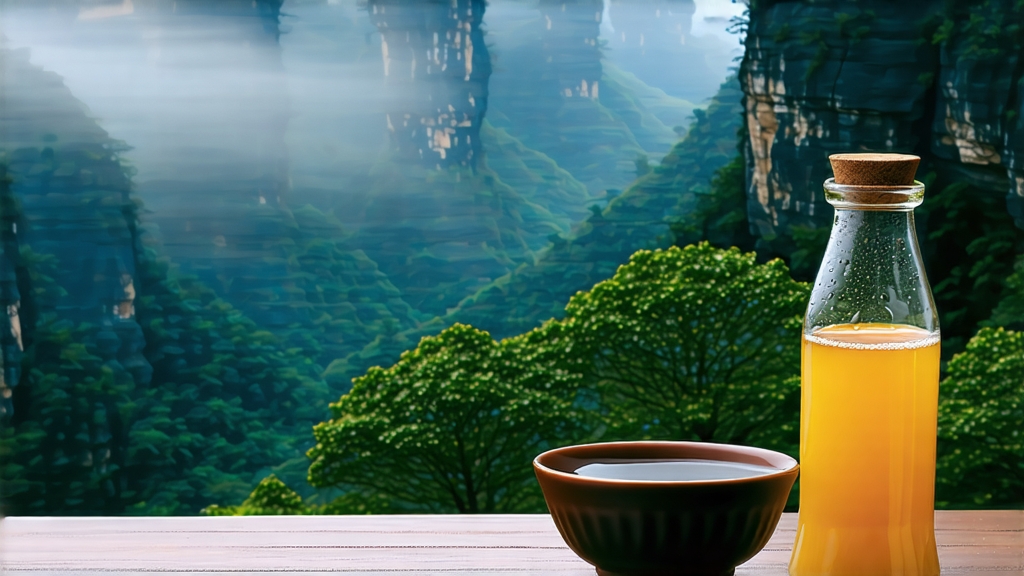
Wuyi Da Hong Pao—literally “Big Red Robe”—is the most myth-shrouded, government-protected, and palate-flamboyant member of the oolong family. While casual drinkers often use “oolong” as a single word, Chinese tea law divides the category into four regional pillars: Minbei (north Fujian), Minnan (south Fujian), Guangdong, and Taiwan. Da Hong Pao stands at the granite apex of Minbei, a group collectively called yancha, “cliff tea,” because the oldest bushes root directly into the narrow fissures of Wuyi’s Danxia rock formations. These crevices store daytime heat and release it at night, stressing the leaves into producing an unmistakable “rock rhyme” (yanyun)—a lingering mineral coolness that arrives after the swallow, like the echo of a struck stone.
History: From Imperial Robe to Space Seed
The Song dynasty (960-1279) first records tribute tea from Wuyi, but the red-robe legend crystallizes in the Ming. A passing imperial scholar, stricken with fever, is revived by monks who brew leaves plucked from six bushes clinging to Tianxin Cliff. Grateful, the scholar drapes his vermillion imperial robe over the bushes to warm them; the next spring the leaves flush an even darker jade, and the name sticks. By the Qing, Da Hong Pao was so coveted that compressed “cake” versions traveled north on the Tea Horse Road alongside pu-erh. In 1985, cuttings from the original mother trees were successfully propagated, creating the “purebred” (qidanzai) line that still dominates premium labels. In 2016, China sent Da Hong Pao seeds to the Tiangong-2 space station; after 33 days in micro-gravity, the mutated seedlings were brought back to Wuyi for stress-resistance trials, merging folklore with astro-botany.
Mother Trees vs. Commercial Lines
Only six 350-year-old mother trees survive, now retired from plucking by national decree since 2006. Their last harvest—20 g—auctioned for ¥208,000, roughly US$28,000 per gram. What reaches the market today falls into three genealogical tiers:
- Qidanzai: first-generation cuttings from the mothers, grown in the same 60 m² micro-terroir called Niulankeng.
- Beidou: second-generation clones selected for higher yield, still within Wuyi’s 60 km² core scenic zone.
- Ruiqiang & others: third-generation hybrids crossed with hardy cultivars such as Tie Luohan or Shui Xian, grown in outlying townships but still within Fujian’s Wuyishan administrative boundary. European importers often label anything from the greater Wuyishan region as “Da Hong Pao,” yet Chinese connoisseurs demand the protected-origin stamp (GB/T 18745-2006) plus the tiny “Zheng Yan” (true cliff) seal that guarantees the tea grew inside the UNESCO heritage gorge.
Craft: The Charcoal Waltz
Da Hong Pao is the most fire-kissed of oolongs. After dawn plucking—only the middle 3–4 leaves are taken, never the bud—the leaves wither on bamboo racks in direct mountain wind for 30 minutes, then move indoors for a 2-hour “cool green” rest. The critical shaking-green (yaoqing) step follows: 8–12 rotations of tossing the leaves in a rattan drum, bruising the edges just enough to initiate oxidation while the centers stay green. Oxidation is arrested at 30–35 %, lower than Taiwanese oolongs but higher than Tie Guan Yin. Next comes the Wuyi signature: three separate roastings over 12 weeks using only local hardwood charcoal from Cyclobalanopsis trees. The first roast, “water removal,” bakes at 120 °C for 2 hours; the second, “consolidation,” drops to 90 °C for 4 hours; the final “foot fire” lingers at 75 °C for 6 hours, during which the master constantly covers the leaves with ash to modulate heat. Between each roast the tea rests 20 days, allowing inner moisture to migrate outward—failure here traps water and produces the dreaded “green core” that tastes raw even after years. A properly roasted Da Hong P